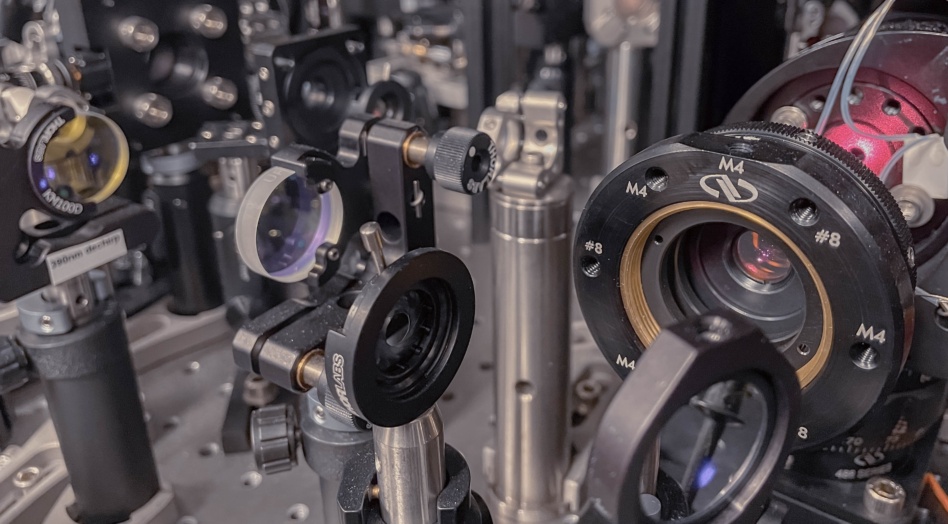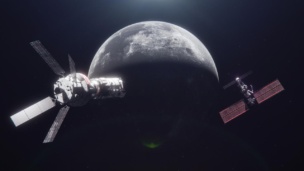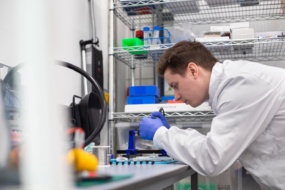Boeing is developing a satellite that will make the first attempt to swap quantum entanglement in space, a potential step towards quantum networking at scale.
The payload, developed in partnership with HRL Laboratories—a Boeing/GM joint venture—is expected to fly on a satellite bus built by Astro Digital in 2026. Boeing declined to say how much money is being invested in the self-funded demonstration of the sat, dubbed Q4S.
The mission will leverage technology based on quantum physics, which describes the behavior of nature below the atomic scale. Quantum technology promises devices that are orders of magnitude more capable than existing computers and sensors that rely on classical physics, but it is very much a frontier field.
“We see the way quantum technology is going to evolve over the long term, and it’s going to be quantum networks that are connecting things across the globe,” Jay Lowell, the chief engineer at Boeing’s disruptive computing division, told Payload. “If we want to be a leader in that space, we need to establish a capability that is meaningful and substantive.”
Quantum 101: Quantum mechanics arose in the early 20th century to explain gaps in physics’ understanding of the natural world, notably around the behavior of light. It predicts behavior that can seem almost magical—for our purposes, we need to think about one behavior called “entanglement.”
Put simply, quantum entanglement describes when subatomic particles—in this case, photons, the elementary units of light—are generated in special devices so that they share the same properties.
When one entangled photon is measured, quantum theory tells us, and experiments have demonstrated, that its partner will be in the same state. What’s remarkable is that this information is true no matter how far apart the particles are—”spooky action at a distance,” in the famous words of Albert Einstein. In 2017, Chinese scientists used a satellite to demonstrate entanglement between two ground stations 1,200 km apart.
Paul Kwiat, a quantum physicist at the University of Illinois Urbana-Champaign who pioneered research into quantum entanglement, offers a helpful analogy: If you and I were flipping two coins, they would randomly return heads or tails, without any correlation. But if those coins were entangled the way subatomic particles can be, we’d always get the same random result—no matter where we are.
One use case for this capability is cryptography, or Quantum Key Distribution—entangled particles could, in theory, be used to transmit the random key to an encrypted message without the possibility of an undetected eavesdropper.
What Boeing is setting out to do: Boeing is also experimenting with entangled particles, but upping the ante: It wants to pass entanglement between four sets of particles onboard a spacecraft.
Its payload will shoot laser pulses through special crystals to generate two different pairs of entangled photons—think of two different sets of identical twins. Then, one twin from each pair will be measured so that they also become entangled, linking up all four photons with the same collective properties.
This daisy-chain effect could be the basis of a technique of transmitting information without loss, enabling a more generalizable communications protocol than QKD.
“The reason that’s a big deal is that linking is the thing that allows you to make larger and larger chains, so you can go the longer distances,” Kwiat says. “That’s also the thing that enables you to link together two quantum computers and make them look like one big quantum computer.”
Space-Grade Quantum: Quantum entanglement swapping has been demonstrated in the lab, but never before in space—and that’s where researchers think the best environment for long-range transmission will be. But devices that manipulate and measure subatomic particles are delicate, and hardening them is a critical engineering challenge.
Boeing’s Q4S will need to maintain precisely controlled internal temperatures and ensure that its mirrors don’t become misaligned during launch. Separate from Boeing’s tech demo, Kwiat is leading a NASA-JPL demonstration called SEAQUE that will launch to the ISS this year; the goal is to prove out a robust generator of entangled particles, which includes a novel mechanism to repair the degradation of the device’s sensors over time.
If it works… The initial applications for this technology are likely decades away, but they could include secure communications, large-scale quantum computing, or the ability to combine signals from multiple optical telescopes for higher resolution observations, the same way radio telescopes do today.




